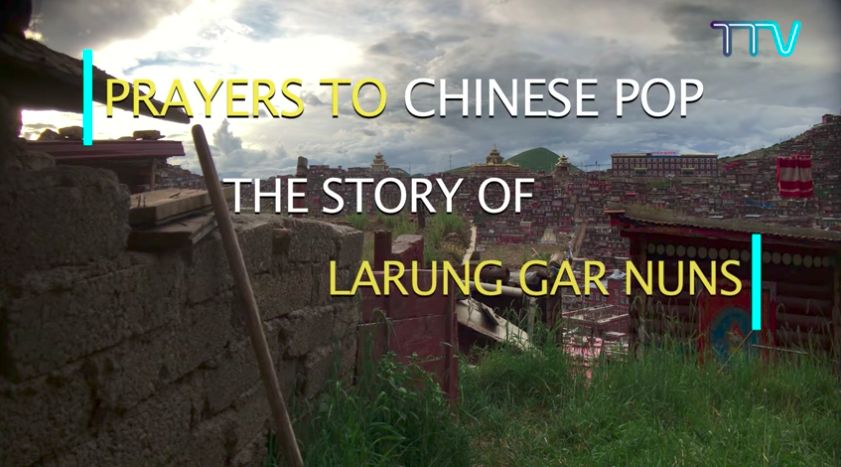 Dharamshala — Marking the first anniversary since the destruction of Larung gar Monastery began, the Tibetan government in exile released a two minute video called, Prayers to Chinese Pop: The Story of Larung Gar Nuns, which highlights the continued, and mostly overlooked, expulsion and suffering of the nuns of Larung Gar.
Dharamshala — Marking the first anniversary since the destruction of Larung gar Monastery began, the Tibetan government in exile released a two minute video called, Prayers to Chinese Pop: The Story of Larung Gar Nuns, which highlights the continued, and mostly overlooked, expulsion and suffering of the nuns of Larung Gar.
Larung Gar, established in 1980 in Northeastern Tibet's Serta County, was the largest Tibetan Buddhist Institution in the world, housing more than 10,000 monks and nuns until July 2016, when Chinese authorities' ordered demolitions leveled thousands of buildings and homes, and expelled more than half the population of the peaceful enclave.
“The video projects nuns at Larung Gar praying, practicing and pledging to lead a peaceful life within the confines of a sacred precinct which no longer exists. The state-backed “demolition order” was issued in June last year and subsequently from July 20 demolitions work began. Bulldozers and cranes are seen carrying the wide-scale destruction and dismantlement of dwellings in Larung Gar that have not only caused the displacement of the nuns but have rendered them homeless. Nuns are seen shoved into buses and many were shocked by the evictions. The evictees are shown held in isolated camps and subjected to patriotic reeducation sessions including practicing military parades, singing Chinese patriotic songs and performing to Chinese pop songs to an audience of seemingly Chinese Communist elite,” said Kalden Tsomo, Head of EU, UN and Human Rights Desk, DIIR.
The President of Central Tibetan Administration Dr. Lobsang Sangay said what is unfolding at Larung Gar is reminiscent of the bitter experiences of Cultural Revolution. “We fear that the Cultural Revolution is reviving in Tibet,” said Dr. Sangay.
DIIR’s International Relations Secretary Sonam Norbu Dagpo said, “the bulldozing of Tibet’s Buddhist academy stirred wide scale response and action from the international community. In December last year the European Parliament demonstrated its concern by adopting an urgency resolution on Tibet. The resolution condemned the demolition of Larung Gar. In February this year, on the eve of 34th session of UN Human Rights Council, six independent experts of UN Human Rights Council made public a joint urgent communication to the Chinese government on the case of Larung Gar”. The written intervention communicated to the Chinese government that Larung Gar is a “living, vital center of Tibetan Buddhist teachings that is renowned worldwide and across China, and is of great significance in terms of Tibetan language, culture and religion as well as for a new generation of Chinese Buddhist scholars and pilgrims”.
“The Chinese government’s forcible eviction of residents at Larung Gar including large number of nuns encompass a systematic and series of rights violations. Such kind of dictatorial and arbitrary act by a member of the UN Human Rights Council challenges the accountability, credibility and integrity of the Council, which is perhaps the largest, and chief of the international human rights watchdog. The word must act stronger to make China an accountable and a responsible member of the UNHRC,” affirmed DIIR’s Information Secretary Dhardon Sharling.
The destruction of Larung Gar received international attention last year, as organizations like Human Rights Watch and Amnesty International called the decimation a clear violation of religious freedom, however the demolitions continued, leaving thousands homeless.
Tibet was invaded by Communist China in 1949. Since that time, over 1.2 million out of a total 6 million Tibetans have been killed, over 6000 monasteries have been destroyed, and acts of murder, rape, arbitrary imprisonment, torture and cruel, inhuman, and degrading treatment have been inflicted on the Tibetans inside Tibet. Beijing continues to call this a "peaceful liberation".


![Tibet has a rich history as a sovereign nation until the 1950s when it was invaded by China. [Photo: File]](/images/stories/Pics-2024/March/Tibet-Nation-1940s.jpg#joomlaImage://local-images/stories/Pics-2024/March/Tibet-Nation-1940s.jpg?width=1489&height=878)















